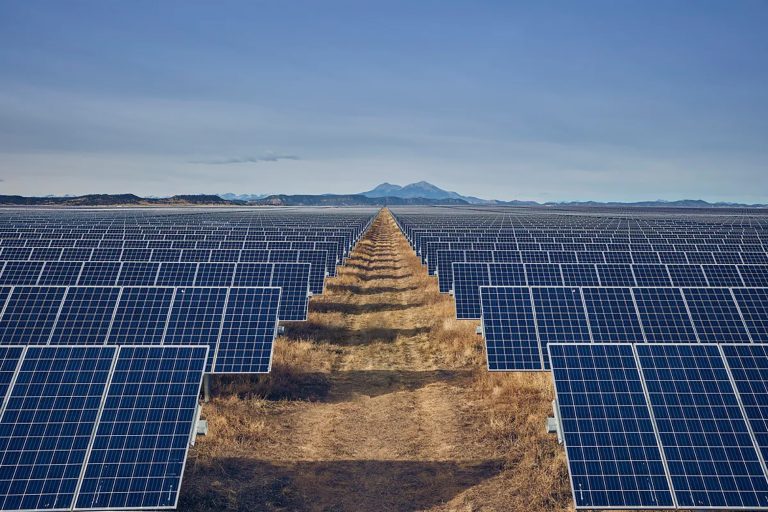Allen Best
Big Pivots
Tri-State, United Power, CORE in line to get $1.1 billion to aid in transition to clean energy
Three Colorado electrical cooperatives will be getting chunks of a $9.7 billion federal program designed to aid rural America in making the transition to a clean energy economy.
Tri-State Generation and Transmission Association, which delivers power to 41 member cooperatives across four states, 16 of them in Colorado, is in line to get $679 million. That award is in the underwriting stage. Tri-State is confident it will be awarded.
“We are optimistic that our application will move forward and be fully funded,” said Lee Boughey, the vice president for communications at Tri-State.
The money comes from a program called New ERA (Empowering Rural America), which was funded through the Inflation Reduction Act passed by Congress in 2022. The program has been called the most important investment in rural America since President Franklin Roosevelt in 1936 signed the Rural Electrification Act. That law provided funding to promote electrification of widely dispersed customers in rural America that investor-owned utilities had found too expensive to serve.
New ERA funding will allow rural electric co-ops to overcome their reluctance to go into further debt and by reducing the burden of their old debt. With less aversion to taking on new debt, Varadarajan explained, they can feel more confidence about investing in new renewable generation — and owning it instead of mostly buying the generation through power-purchase agreements.
Tri-State lobbied hard for a carve-out in the Inflation Reduction Act that would allow it and other cooperatives that serve predominately rural areas of the United States to get assistance in the energy transition. Based in Westminster, Tri-State had become heavily anchored in coal-fired generation and was weighted down in the transition by the debt on some of these coal plants.
The federal money will be used by Tri-State to support the retirement of 1,100 megawatts of coal-fired generation. It shut down one coal plant in New Mexico in 2019 and has plans to close the three coal-burning units it operates at the Craig Generating Station from 2025 to 2027. It had originally planned to close Springerville 3, a coal plant in Arizona, in 2040, but the promise of the federal funding has given Tri-State the comfort to pay off undepreciated debt in the plant and move up its retirement to 2031. It has made plans not to divest from generation at the Laramie River coal plant in Wyoming.
The award will help Tri-State procure 1,480 megawatts of renewable energy in the form of solar, wind and battery storage. This conversion will reduce member costs an estimated $422 million over 20 years.
(Tri-State operates the San Isabel Solar Project north of Trinidad links to a transmission line owned by Tri-State Generation and Transmission Association. The 30 megawatt solar project is one of three supplying power to Tri-State.)
The original letter of intent for New ERA funding, submitted by Tri-State a year ago, was for $970 million. Because of the number of applications from across the country, Tri-State and other applicants were advised to moderate their requests. Tri-State was invited to submit a proposal for $679 million.
Through a mix of low-interest loans and grants, Tri-State would look to leverage this budget authority to support investments that could total more than $2 billion for 18 different projects. It plans to issue a request for proposals in September.
In an interview, Duane Highley, the chief executive, said that Tri-State began getting news in early August that it was in line to receive funding. That, along with news from the Federal Energy Regulatory Commission that aligned with Tri-State’s plans, made it his single best week since he joined Tri-State as chief executive in April 2018.
The financial award is also making Tri-State more attractive in the eyes of Wall Street analyst. Highley said Tri-State had been in conversation with Standard & Poor’s and the two other credit agencies. “They are extremely excited,” he said.
The federal money will result in “less risk, a stronger balance sheet and lesser rates” for Tri-State’s members, he said.
Tri-State’s ratings had been declining in recent years as member cooperatives left Tri-State to pursue what they consider to be greener pastures elsewhere. Kit Carson Electric, in New Mexico, left in 2016 and has succeeded greatly. It was followed by Delta-Montrose Electric in Colorado and then, on May 1 this year, United Power. Three others are now in line to leave.
In rural Colorado, the announcement was welcomed by individuals who get power from cooperatives supplied by Tri-State.
“This is a big deal for Coloradans who get their electricity form rural electric coops on Tri-State’s system,” said Jeff Fiedler, a Lake County commissioner who is also a board member of Buena Vista-based Sangre de Cristo Electric Association, a Tri-State member. “Our communities have supported Tri-State’s recent moves to catch up in the energy transition, and make sure we don’t get left behind and miss out on cleaner energy and lower bills for rural residents and businesses.”
According to the funding formula, Tri-State and other larger electrical providers were to get 60% of the $9.7 billion, with mid-sized cooperatives getting 20% and smaller cooperatives the final 20%. Several smaller Colorado cooperatives also submitted letters of interest to RUS for New ERA funding. Those recipients have yet to be announced.
See more stories about Colorado’s energy transition at BigPivots.com.




